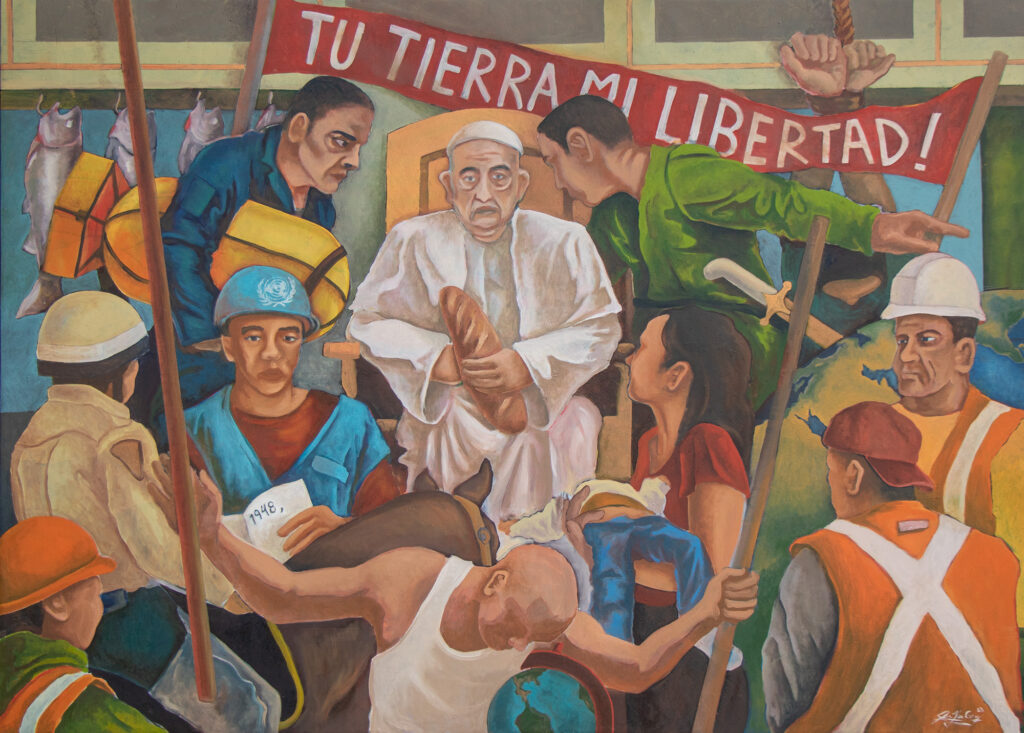My current body of work, Work i(s/n) Progress is a series of narrative paintings influenced by biblical tales, Old and New Testament alike. Construction workers are woven into each painting, sometimes as the main protagonists, and sometimes as the weary onlookers. Growing up, I was instructed to read an hour of the bible every day. I don’t consider myself religious, yet I’ve found an odd comfort in leaning into the text that haunted my formative years.

This piece is loosely based on the Old Testament story “The Wisdom of Solomon” wherein Palestine and Israel stand in for the two mothers claiming a baby. The pope stands in for Solomon because of the church’s claims of Papal Infallibility and because he’s the best figurehead of the Western world I could think up. The Pope is flanked by Israel (left) and Palestine (right). Israel holds “Fat Man,” the nuclear weapon the United States dropped on Nagasaki on 9 August 1945. Palestine has Zulfiqar sheathed on his side, with a bound prisoner behind him, representing the over 200 hostages taken by Hamas on October 7, 2023.

Staring blankly at us is a United Nations Peacekeeper holding a pamphlet titled 1948 (referencing the Arab-Israeli War of 1948). A mother is holding her child; his condition is unknown, representing the Israeli and Palestinian civilian deaths spanning decades of conflict. There are also mounted police, three construction workers, and a man hovering over a small globe with a large wooden staff in each hand.
The two globes in this composition are turned to different areas around the globe. The smaller globe is centered on the Americas. The larger globe focuses on the Middle East.

Lastly, there is a red banner with white text that reads “TU TIERRA MI LIBERTAD,” or Your Land My Liberty. The banner nods to Diego Rivera’s work “The History of Mexico.
